Rootstocks are mysterious. They do their work hidden, underground. Yet, their influence on the trees above ground is real and measurable.
For example, some rootstocks have demonstrated that they can induce the tops to make more than twice as much fruit compared to other rootstocks. This was first shown back in the 1980s and 1990s in a trial in Orange County comparing Hass on ten different rootstocks. (See “Avocado Clonal Rootstock Production Trial: A View after 8 Years.”)
But more relevantly, it has been shown in an ongoing trial in Ventura County comparing Hass, Lamb, Carmen, GEM, and Reed on nine different (newer) rootstocks. (See “Scion yield by rootstocks” — slide 44 — by Mary Lu Arpaia in this presentation.)
Twice the amount of avocados, just by using one rootstock over another? That is a real, measurable, and edible influence.
Every time we plant, we should bear in mind that we are planting two trees in one (assuming we’re planting a grafted tree). Are we planting desirable varieties on both the top and bottom? The variety that we have as our rootstock should suit the particular growing conditions in our yard (or on our farm), as far as possible.
I admit that only recently I have acknowledged the importance of rootstocks and acted upon that understanding in what I choose to grow. I still have a lot to learn. Nevertheless, here I share some of what I think might help your avocado growing.
Zutano seedling rootstocks
I’d guess that most of the avocado trees planted by home gardeners in the last decade or two are growing on Zutano seedling rootstocks. That is, the nursery planted a seed from a Zutano avocado, then grafted a scion variety (Hass, for example) onto that Zutano seedling tree. Hass has the leaves and fruit on top; Zutano seedling has the roots on bottom. This is my guess because I’ve been told by many nurseries in Southern California that they use Zutano seedlings for their rootstocks for trees grown for home gardeners. (Although I know that some nurseries also use G6 seedlings, and Topa Topa seedlings were commonly used as rootstocks in the past.)
Why Zutano? One, it’s a variety that has proven to make a decent seedling rootstock for our general California growing conditions, which include our soil types, our temperatures, our disease issues, and our water quality. Two, Zutano seed is readily available since many avocado farmers use Zutano trees to pollenize their Hass trees, and there is almost no market for selling the Zutano avocados for eating.
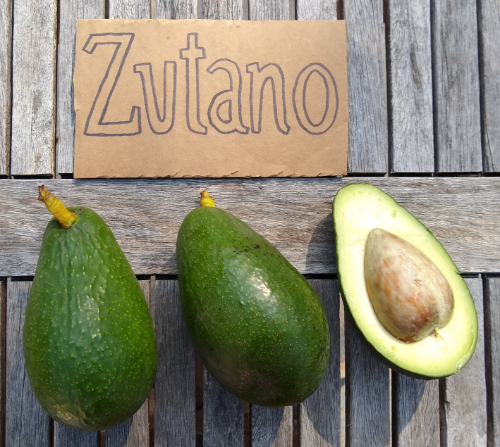
I have a number of avocado trees of different varieties on Zutano seedling rootstock. Most of them perform decently, some perform very well, some perform poorly. It’s impossible to know exactly what part the rootstock plays in the performance of each of my trees, however, as they are different varieties growing in the variable settings of a typical home gardening situation.
A better circumstance in which to discern the influence of a rootstock is through a scientific trial where many trees made of the same rootstocks and the same scion varieties can be observed growing in a relatively uniform farm setting (no shade from a house on one tree, no big pepper tree with roots competing with another tree, etc.).

In one such trial in Ventura County, Zutano seedlings were compared to 12 other rootstocks. The Zutano seedlings performed the worst in almost every category: most leaf burn and/or heat damage, highest tree mortality, and lowest fruit production. (See Gunderson trial in this presentation.)
It is important to keep in mind that this was just one trial in one location though. Different rootstocks do perform differently in different conditions. Unfortunately, I’m not aware of another rootstock trial that includes Zutano seedlings. I believe that this is partly because farmers don’t use Zutano seedling rootstock, by and large, so there’s no incentive to study it. And the implication is that farmers don’t use Zutano seedling rootstock because it has never shown promise to be the best rootstock.
There is no overall best avocado rootstock
What has been found in rootstock trials is that, as Greg Douhan once put it, “No rootstock produced thus far will perform well under all conditions.” Douhan lead the avocado rootstock breeding program at U.C. Riverside for a time. What breeders like Douhan do is try to find rootstocks that perform well when faced with specific challenges, such as soil infected with Phytophthora cinnamomi, the microorganism that causes the disease called root rot, or salty irrigation water, or high heat, etc.

Then a grower can choose to buy avocado trees grown on rootstocks that are capable of growing well and fruiting well in his particular conditions.
Seedling vs clonal rootstocks
Rootstocks have been bred or discovered which perform better than others against the challenges of particular growing conditions. For example, a rootstock called Dusa was discovered in South Africa growing well despite being rooted in soil infested with Phytophthora cinnamomi. Dusa is now widely used as a rootstock in California because it has also shown tolerance to root rot here.
But the Dusa rootstocks have not been created through growing seeds from Dusa avocados.
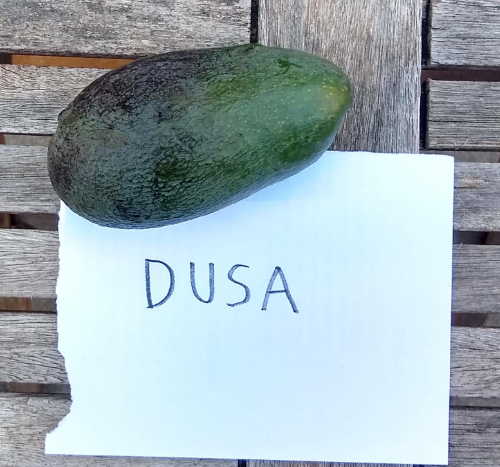
As Greg Douhan explains, “Seedlings produced from seeds gathered from [root rot] resistant or tolerant trees usually show little resistance.” Therefore, rootstocks like Dusa are cloned, that is, they are grafted just like the tops of avocado trees are grafted. Except that after grafting, the Dusa branch is then forced to make roots so it can become a rootstock.
(Rootstocks are actually clonally propagated in a few different ways — including tissue culture — but here is an illustration of one of the traditional methods on the Brokaw Nursery website.)
Demonstrated qualities of avocado rootstocks
Here in California in 2021 there are a handful of rootstocks that nurseries currently produce clonally, and each of these rootstocks has been shown to perform better than others in particular ways or against certain challenging growing conditions. In addition, the University of California continues to breed, test, and release new rootstocks. Breeding programs in other countries also develop rootstocks that make their way to California.
I made the table below in order to help us see, at a glance, which rootstocks have demonstrated good performance in specific conditions or for specific aims. The trial or evidence for each listing in the table is cited with a number and noted at the end of the post.
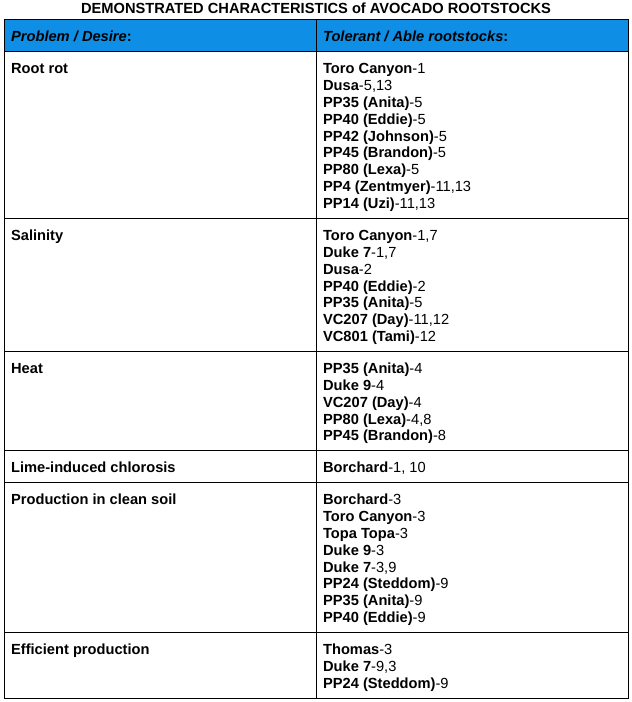
Notes on the table
“Salinity” is defined as electrical conductivity (EC) of water of 1.5 or higher, as was used in the trials cited.
“Heat” is defined as temperatures over 110 degrees F, as was reached in the July 2018 event used in trials cited.
“Lime-induced chlorosis” is where a tree’s leaves yellow and growth is stunted due to high soil pH (8 or above).
“Production in clean soil” means high fruit yield in soil that is not saline or infested with root rot.
“Efficient production” means the most fruit on the smallest tree canopy.
I haven’t included cold tolerance because I’m not aware of any rootstock that has been shown to confer cold tolerance on the scion, not in my own personal observations nor in those of others. (For example, see the comments of Ben-Ya’acov here.)
However, the cold tolerance of rootstocks themselves are noted and ranked in this excellent table on avocado rootstocks in the book “Avocado Production in California.”
Some of the rootstocks listed in my table are under patent while others have not even been released yet. I still listed the unreleased varieties because some are predicted to be released and available soon.
Where to buy avocado trees on clonal rootstocks
That being said, avocado trees on any clonal rootstock are difficult for a home grower to find. Most nurseries that propagate them only sell in quantity (usually a minimum of 20 trees). I hope this changes in the future, but that’s the reality as of now. The one nursery that I have experience with that sells avocado trees of many varieties on clonal rootstocks to home growers is Subtropica Nursery in Fallbrook, San Diego County.
To close, I want to reiterate that avocado trees on Zutano seedling rootstocks or G6 seedling rootstocks or other seedling rootstocks that most trees for home gardeners have can grow and produce decently, even very well. I know this firsthand with trees in my own yard, and I’ve observed it in trees in many other yards.
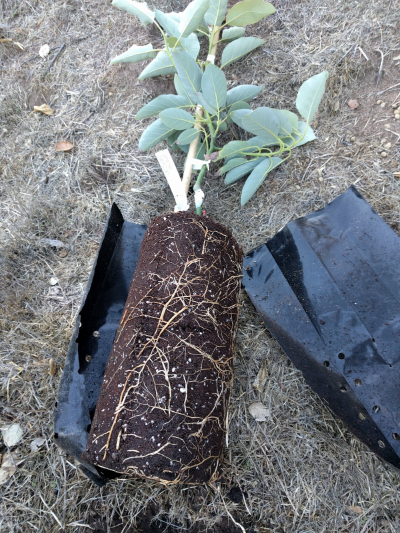
We don’t need to cut down our trees on seedling rootstocks just because trees on clonal rootstocks generally perform better in trials. All rootstock varieties originated as seedlings, and it’s even possible that you have a seedling rootstock under a tree in your yard that is better than any clonal — highly unlikely, but possible.
The main advantage in using a clonal rootstock is that it has known genetics. Seedling rootstocks are variable; clonal rootstocks are not. And because the clonal rootstocks have been studied, they have known results in specific growing conditions. In these ways, clonal rootstocks are less risky than seedling rootstocks. For these reasons, these days I plant trees on selected clonal rootstocks rather than seedling rootstocks whenever possible.
I leave you with an image that illustrates the difference a rootstock makes. These are three young Sharwil avocado trees in a friend’s grove. They are growing on seedling rootstocks that he planted and grafted himself on the same day a few years ago.

I don’t run ads on my Yard Posts because of your generous support. Thank you.
All of my Yard Posts are listed HERE
Citations
1. Hank Brokaw 1986: http://www.avocadosource.com/CAS_Yearbooks/CAS_70_1986/CAS_1986_PG_111-114.pdf
2. UCR Chloride Trial: https://www.ars.usda.gov/arsuserfiles/20361500/pdf_pubs/P2591.pdf
3. Avocado Clonal Rootstock Production Trial: http://avocadosource.com/WAC2/WAC2_p305.pdf
4. Manosalva Irvine 2018: https://youtu.be/9G38nOnbtxQ
5. Manosalva Video 1:25: https://youtu.be/9G38nOnbtxQ
6. Menge Riverside 1991: https://ucanr.edu/sites/alternativefruits/files/121265.pdf
7. Hass Salinity Response: http://www.avocadosource.com/WAC2/WAC2_p209.pdf
8. Jim Brown July 2018: https://californiaavocadosociety.org/assets/files/Seminar%20Presentations%202020/06102020%20rootstocks%20avocado%20CAS%20PM%20.pdf
9. Scion:Rootstock Trial: https://californiaavocadosociety.org/assets/files/Seminar%20Presentations%202020/06102020%20rootstocks%20avocado%20CAS%20PM%20.pdf
10. Hank Brokaw WAC1: http://avocadosource.com/WAC1/WAC1_p034.pdf
11. Carpinteria: http://www.avocadosource.com/ARAC/Symposium_2003/article_1.pdf
12. Stehly: http://ceventura.ucanr.edu/?blogpost=6584&blogasset=19305
13. PRR Tolerant Rootstocks: https://www.researchgate.net/publication/285975820_Three_New_Avocado_Rootstock_Cultivars_Tolerant_to_Phytophthora_Root_Rot_%27Zentmyer%27_%27Uzi%27_and_%27Steddom%27

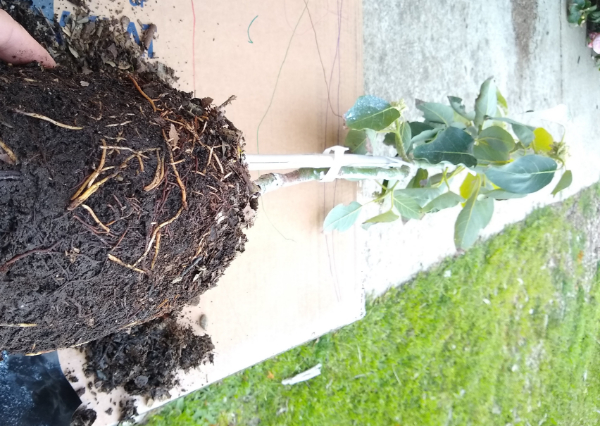


Hi Greg, I live in the east county in Spring Valley. About 8 or 9 years ago, I planted a Fuerte tree in my back yard. I had no fruit until 2 years ago and then last year nothing, and now this year the tree has grown by leaps and bounds and is absolutely covered with blossoms. Is this normal for a Fuerte to produce every other year?
I am very happy with my Zutano. West of Sebastopol Lots of big tasty avocados. Better than most sold in grocery stores. They are thinner skinned. This may mean thay are too delicate for shipping.
Hi Sharon,
I don’t know anyone who has a Zutano tree in their yard who doesn’t enjoy the fruit. I personally don’t find it as good as some other varieties, but it’s definitely not bad. Commercially, its main faults are that it has green skin, doesn’t taste really good until it is about to start to get cracks and spotting on the bottom (so the harvest season isn’t very long), and the thin skin as you mentioned. Don’t you love how productive Zutano trees are though? That’s another nice quality of them.
Years ago I bought a Zutano tree. It was slow growing and produced a few avocados. With great avocados like Hass, Reed, etc. the Zutano in comparison was tasteless with a big seed. I don’t remember if it had strings like Fuerte, but it was a loser to me. I dug up the tree and put it in a pot, cut it down to a 16″ trunk, and grafted to it. If I’m going to grow fruit, I want the best variety possible or I might as well just by tasteless commercial fruit grown for shipping qualities.
Karen,
Yes, Fuerte is known to be alternate bearing.
try thinning out the blooms, might help the tree conserve energy for the next year balance things out… I did that with my persimmon tree which had 6 fruit one year the next year I thinned the blooms and the following season I had like 30 or 40 smallish but better than 6!!! This year’s the productive one looking forward to them 🙂
I think everything I have here is on a zutano seedling and it seems things are doing much better lately. I figure it’s mostly due to the fact that I’ve planted them differently than I used to. Some stuff has a lot of salt burn and other things none at all so something is definitely different plant by plant.
I’m curious, can one do a graft of a quality root stock to an existing tree (like they did to that navel orange)?
Hi Bob,
Yes, that inarch grafting is also possible on avocados.
“In Israel this method was used successfully to cure chlorotic avocado trees by improving iron absorption of the tree through additional, more efficient rootstocks. The same method was used to reduce salinity damage and to improve productivity.” From: http://www.avocadosource.com/Journals/HorticulturalReviews/HortRev_1995_PG_381-429.pdf
And here in California, they’ve been doing it since at least the 1930s. Here’s an article about it from the 60s: http://www.avocadosource.com/CAS_Yearbooks/CAS_48_1964/CAS_1964_PG_72-77.pdf
That’s some fascinating reading. I wonder if there will be a market for selling root stock for the purposes of doing this sort of graft and making backyard trees do better.
My one tree on Dusa far outperforms all of my other trees. It is still a young tree but I can Cleary see the difference!!
Thanks Robert, that’s what I thought, but wasn’t sure. If everything goes well, I should have a bumper crop this year…should zi gertilize or just leave it alone?
Interesting topic, I have purchased in Dec 2019 GEM on Dusa cloned rootstock. It bloomed the very first spring but all the fruitlets eventually dropped from the tree. I’m glad they did since the tree had more energy to quadruple in branch volume past growing season. This spring branches are completely covered with blossoms. I will see if any of the fruitlets will stay on and mature. Most of its branches are relatively spindly and need support so they don’t droop down. GEM does have couple of strong shoots that will keep going upward. In comparison to the Lamb Hass which is on an unknown rootstock the GEM is considerably smaller. Lamb Hass is not even 2 years old and it is over 6 ft tall, also completely covered with blossoms and has 2 maturing fruits. I have just noticed that is has dropped tens of still green leaves. Not sure why as the fallen leaves look healthy and have little or no brown tips. If you have any idea as to why I would appreciate your input.
Hi Paul,
This is a habit of Lamb’s. My Lamb did the same thing when it was young, and I know others with the experience. Weird, but nothing to worry about.
Greg,
thank you for your explanation, As always you are very helpful.
Hi Greg,
I appreciate all your research. I noticed I have of luck grafting onto Zutano seeds but perhaps because it’s a big tree the seedlings tend to be vigorous too. I was tempted to buy a Zutano tree but your article points out that it really isn’t necessarily the case that Zutano is a great rootstock as much as it is a widely used rootstock since it pollinates Hass.
Thanks for saving me space for a different tree! I think I will just use whatever seeds I have and graft onto the most vigorous seedlings.
Hi Greg,
I think that is a good strategy. You might find that seeds from certain varieties tend to do better in your yard than others too. I have grown seedlings of many varieties in my yard over the years and I’ve found that Reed seedlings aren’t the best. They often get chlorotic. Hass seeds are hit and miss. Gwen seeds have done best for me.
But you never know . . . it might be just the opposite in your yard due to soil conditions, etc.
Thanks for the feedback on the Gwen. I have heard that Hass generally doesn’t work out well for people up here. In terms of vigor I seem to notice that in the bay area the more Mexican ones do better perhaps that is because even in the cold they will grow so good point on conditions. Interesting about the Gwen. Thanks!
Hi Greg,
I’m in Ramona. Just wondering where to find avocado trees on clonal rootstock around here? I saw there are some nurseries in Fallbrook that carry a variety of trees but most don’t say anything about rootstock on their websites. Thanks for all you do! PS Do the Ground Squirrels steal avocados? If so, do they have specific favorite varieties?
I bought mine Dusa clone rootstock from Subtropica nurseries
2929 E Mission Rd Fallbrook at Elli stand. Little more expensive than on non-clonal but in my opinion definitely worth it.
Thank you very much Paul! I’ll check there soon.
Hi Glenis,
If a nursery doesn’t explicitly say that a tree is on a clonal rootstock, I would assume it is not.
I don’t know if ground squirrels steal avocados from up in the tree. I’ve never seen them do that even though I have them around my property and they’ve certainly had the chance.
My Hass and Reed that I bought from subtropica are on what was labeled “salt tolerant “ rootstock. Do you have any idea what rootstock they use as salt tolerant?
Hi Walter,
I don’t know, sorry. They use a number of rootstocks that have demonstrated salt tolerance.
Ground squirrels are my main pest in Yorba Linda. They take bites out of lots of the avocado crop, and even snip full grown avocados and drop them to the ground. They get every macadamia nut from my mature tree, taking them long before they are ripe. I built a nest box in hopes of a barn owl to rid the rodent problems here. No owl yet.
Check the publication ‘GEM Avocados in New Zealand September 2019’ on Californiaavocadogrowers.com
Zutano rootstock outperformed clonal rootstock especially ‘Dusa’ as it is a high vigor rootstock and will starve the GEM scion resulting in higher tree mortality.
On the other side, Gary of Laguna Hills Nursery said the problem with Zutano rootstocks is that the seedlings are variable and a small percentage of them will die for no apparent reason.
Last spring Subtropical Nursery had GEM on Zutano rootstock in 3 gallon plastic sleeves for $25.
Hi Tom,
Thanks for this. I’m familiar with that presentation. Here’s the link: https://www.californiaavocadogrowers.com/sites/default/files/documents/GEM-in-New-Zealand-Full-presentation.pdf
We must remember a couple things when interpreting it. First and foremost, it comes from New Zealand, which has extremely different growing conditions compared to California. Second, most of the notions listed as explanations of the results are speculation. (The subtitle of slide 22 acknowledges this as it is “Speculation on what happened.”) Not to say that we can’t learn anything from this presentation, but we ought to keep those things in mind.
Different rootstocks have been found to give very different results in different locations, especially distant locations.
See here for example: http://avocadosource.com/wac9/03-hormazainaki2019.pdf
And also see here: http://www.avocadosource.com/wac7/Section_14/LeLagadecDanielle2011.pdf
As regards the specific combination of GEM on Dusa, I have seen trees of this combination in Southern California doing poorly in soil with high pH. The leaves of the trees were yellowish and the growth of the canopy was stunted. But I have also seen GEM trees on Dusa doing well in other locations in Southern California.
Hi Greg,
I just discovered this website and the wealth of information is amazing, I really appreciate it. I recently purchased two avocado trees and am not sure the best location in my yard as well as the soil conditions. Do you know of anyone who makes house visits to give recommendations and guidance?
Thanks,
Zack
Hi Zack,
Thanks. Where are you located? Sometimes I am able to do this, as long as you’re in Southern California, but I don’t know anyone else around here who does this who I could recommend, unfortunately.
Let me know if you’d like to explore my visiting. Otherwise, I can try to guide your process through my posts here, and feel free to ask questions along the way.
Hi Greg. I would love for you to make a house call as my avocado trees in oceanside were doing fabulous, then I possibly overwatered this spring and summer and now may have to replace a couple? I would love your advice and recommendations at your convenience, please let me know!
Hi Rich,
I’ll email you.
I bought 2 trees back in 2015, one is Hass and other one is Zutano. I got both of them from Laguna Hills Nursery, but I think the owner got them Brokaw cause there was tag at the bottom. Anyway the Hass tree is spread wide (I like that cause I can pick avocados easily) unlike Zutano is just growing tall (I have to use ladder/picker pole to get avocados). Hass taste the best hand down, Zutano taste is ok and the skin way too thin if we let it too ripe. I recently got Carmen Hass after waiting for like 3+ years, its also from Brokaw. The tree is around 5 feet but been flowering since last year. My front/back yards got nothing but avocado trees. I have 5 avocado trees right now, there is also a Lamb Hass. I guess I’m an avocado lover haha. I find that Im lucky to find this post, its worth reading and getting me know more about these rootstocks.
Thank you Greg Alder.
Great to hear about all your trees, Hoang. I hope your Carmen does well for you.
Hi Greg,
We have a large avocado/ citrus grove in Riverside planted about 6 years ago. With my limited ag background we relied on the (ex) farm manager for the recommendations on planting. We believed we had planted Hass Toro Canyon but have come to learn, years later, he planted all Hass G-6 due to availability with the nursery at the time.
I’m wondering if you came across any info on yield comparison between the two in “clean” soil?
One of the new managers I interviewed was very disappointed to hear we have G-6 and suggested maybe even removing and replacing some of the trees! We’re also looking to plant some more trees so trying to get a better understanding of what might be best for yield. Thanks!
Hi William,
I don’t know of any studies with both G6 and Toro Canyon in clean soil. But I’ll link to a couple of other studies and discussions that include G6 and sometimes Toro Canyon so you can try to make some inferences.
“Selecting Rootstocks” by W.H. Brokaw
“A Comparison of Hass Selections on Four Rootstocks” by Bergh, Martin, and Whitsell
For your new trees, I would call Maddock Nursery or Subtropica Nursery (both in Fallbrook) and ask them for rootstock guidance tailored to your situation.
Greg, thank you for so much for all this excellent information! I live in San Diego near the MIramar Base. I really want to grow my own avocados! What is the best root stock to graft a Hass or Fuente scion onto and where to get it? Thank you!
Greg,
I purchased and planted a 15-gal Hass avocado last year, and the tree appears to be unbelievably healthy. We have our first avocados this year. So far they are small, but we’re hoping they continue to expand. However, what we noticed recently is that in addition to our main trunk, which I had wrapped in white cloth, a very hearty additional trunk has sprung up right at the base. It has already grown as high as the main tree itself. We have not seen any avocados on the tree at this point, but I thought I saw blossoms in the spring (may be mistaken).
The question is: are we wasting our time with this secondary growth and should we consider cutting it off and continue with just the primary, or should we continue to let the two trunks develop as they are?
Your feedback would be very much appreciated!
Thanks,
Stan
That additional trunk is very likely from rootstock, and if so, cut it down ASAP. Check if it arises below the graft line. Rootstock fruit is nowhere near as good as Hass and the second trunk will limit growth of your Hass. This happened to me as well and my Hass tree is now doing well a year after I cut the rootstock trunk
Hi!
Do you know of any nursery who would ship avocado rootstocks? I am looking for 2-3. thx!
As a retired technician, I consult with avocado growers in Chile, South America where they struggle with a high chlorine and other salts as well as a lack of water. I would appear that Mary Lu Arpaia and David Crowley have worked in selecting salt tolerant avocado rootstocks. Have they had any luck? Since, from what I see with your “Posts”, you keep up with many crops, please update me on who I might contact on this subject.
Thanks and keep up the good work! Robert
Hi Robert,
There are a number of rootstocks that have performed better in salty conditions. Some have come from the University of California program that is now directed by Patricia Manosalva, and others have come from Israel and South Africa.
Have a look at the Brokaw Nursery website for the latest available rootstocks from UC and South Africa (Westfalia): https://www.brokawnursery.com/
See this presentation from Silit Lazare of Israel about their recent rootstock trials concerning salt tolerance: http://www.avocadosource.com/AvocadoCafe/20220720/AvocadoCafe_20220720.htm
Home Depot in the SF Bay Area had mostly Zutano trees for sale this fall. They were grafted. What are Zutanos typically crafted on?
So what’s the most productive rootstock? What do you recommend for Central Valley?
I have a Lamb Hass avocado tree about 10yrs old, & about 15′ tall. It produces yearly, & produces more avocados each year. The fruit is not as Creamy as the regular Hass. I have a Sir Prize Avocado within 4ft of it that blooms alot, & is half the size of my Lamb planted at the same time. The Sir Prize has lots of flowers, but produces very little fruit. And is supposed to be a cross pollinators for my Lamb. My “Little Cado” was 5ft tall with 5 Avocados growing in a 20gal pot, & purchased 3 yrs ago. It has very large avocados & black when ripe. And they are very creamy & delicious. The best Avocado I’ve ever tasted, & its grown 4ft taller, & widened alot & has lots of flowers now. I also have a regular Hass Avocado that was 3ft tall in a 5 gal pot, I planted 3 yrs ago… & it’s very wide now & about 6ft tall with lots of blooms now. (no avocados from this tree yet) I live in the West San Fernando Valley CA, & Avocado, Citrus, & Mango trees flourish in my area.
I have 15 Mango Trees, & lots of Citrus tree varietys. And fig trees, papaya, guava, banana, & a variety of fruit trees (I graft onto)
Anyone else in my area, interested in grafting.. contact me.